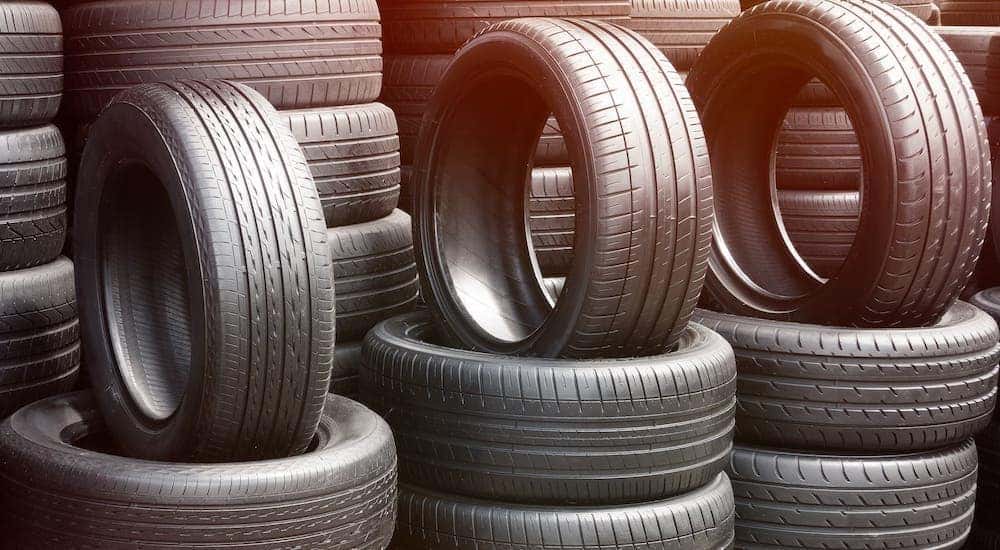Tire Service: The Impact of Weather Condition Problems
When it comes to making certain optimal efficiency and security on the road, understanding the effect of climate conditions on tire solution is crucial. In this discussion, we will check out the complex relationship between weather condition problems and tire solution, dropping light on the significance of weather-specific tire maintenance methods and considerations.
Warm and Tire Performance
When subjected to high temperature levels, tires experience adjustments in performance that can considerably impact car safety and handling. The warm produced from prolonged driving or hot weather problems triggers the tire rubber to soften, causing lowered tread life and raised wear. As the rubber ends up being softer, the tire's grasp when driving lessens, affecting stopping distances and total grip. In extreme cases, excessive warmth can even trigger tire blowouts, presenting an extreme safety and security threat to the lorry and its occupants.
In addition, high temperatures can increase the process of tire aging, triggering the rubber to weaken much more promptly. To minimize the results of warm on tire efficiency, motorists need to regularly check their tire pressure, revolve tires to make sure even wear, and examine for any type of signs of damage.
Cold Climate Effects
Cold weather conditions can have a substantial impact on tire efficiency and safety and security. In chilly weather condition, tires might additionally lose air pressure a lot more swiftly, which can affect managing and fuel efficiency.
To reduce the impacts of cool climate on tires, it is critical to on a regular basis examine tire stress and inflate them to the supplier's advised levels. Utilizing wintertime or all-season tires made for cool climate conditions can likewise enhance traction and grip on icy or snowy roads - mopar tire service specials. Correct tire upkeep, consisting of normal examinations for wear and damages, ends up being also a lot more important during chillier months to guarantee optimum efficiency and security
Rainy Conditions Impact
During stormy conditions, tire efficiency and safety can be substantially influenced by the damp roadway surfaces and decreased presence. The tread pattern of tires plays a crucial function in keeping grip on wet roadways. Tires with worn-out footsteps are a lot more prone to hydroplaning, where a layer of water develops in between the roadway and the tire surface area, bring about loss of grip. To combat this, chauffeurs need to frequently examine their tires for ample tread depth and think about purchasing tires specifically developed for wet conditions.

Snow and Tire Safety And Security
Snow-covered roadways position distinct challenges for drivers, stressing the relevance of correct tire option and upkeep. When driving in snowy conditions, having the right tires can make a substantial distinction in safety and performance. Winter months tires are created with special rubber substances and step patterns to provide better grip on snow and ice compared to all-season tires. The much deeper treads and sipes of winter tires help grasp the road much better, minimizing the risk of slipping and sliding.
In addition to making use of winter tires, it is crucial to guarantee they are properly pumped up. Winter can create tire pressure to go down, affecting traction and handling (morris tire and alignment). On a regular basis examining and maintaining the right tire stress is vital for ideal performance in snowy conditions

Weather-Related Tire Upkeep
Weather-related tire upkeep incorporates a range of methods intended at making sure optimum tire feature and long life in different weather condition situations. One crucial facet of weather-related tire upkeep is tire stress law. Inspecting tire walk frequently and changing tires when walk wear reaches a particular deepness is important for preserving grip and security in unfavorable weather condition.
Final Thought
To conclude, weather have a substantial impact on tire performance and safety. From heat influencing tire stress and use to cold weather condition decreasing traction, it is vital to consider the weather when maintaining and using tires. Stormy problems can reduce grip and lead to hydroplaning, while snow can boost the danger of accidents if tires are not properly outfitted. Weather-related tire upkeep is important in ensuring ideal performance and security on the roads.
In this discussion, we will certainly explore the intricate connection between weather condition conditions and tire service, shedding light on the importance of weather-specific tire upkeep techniques and considerations.
